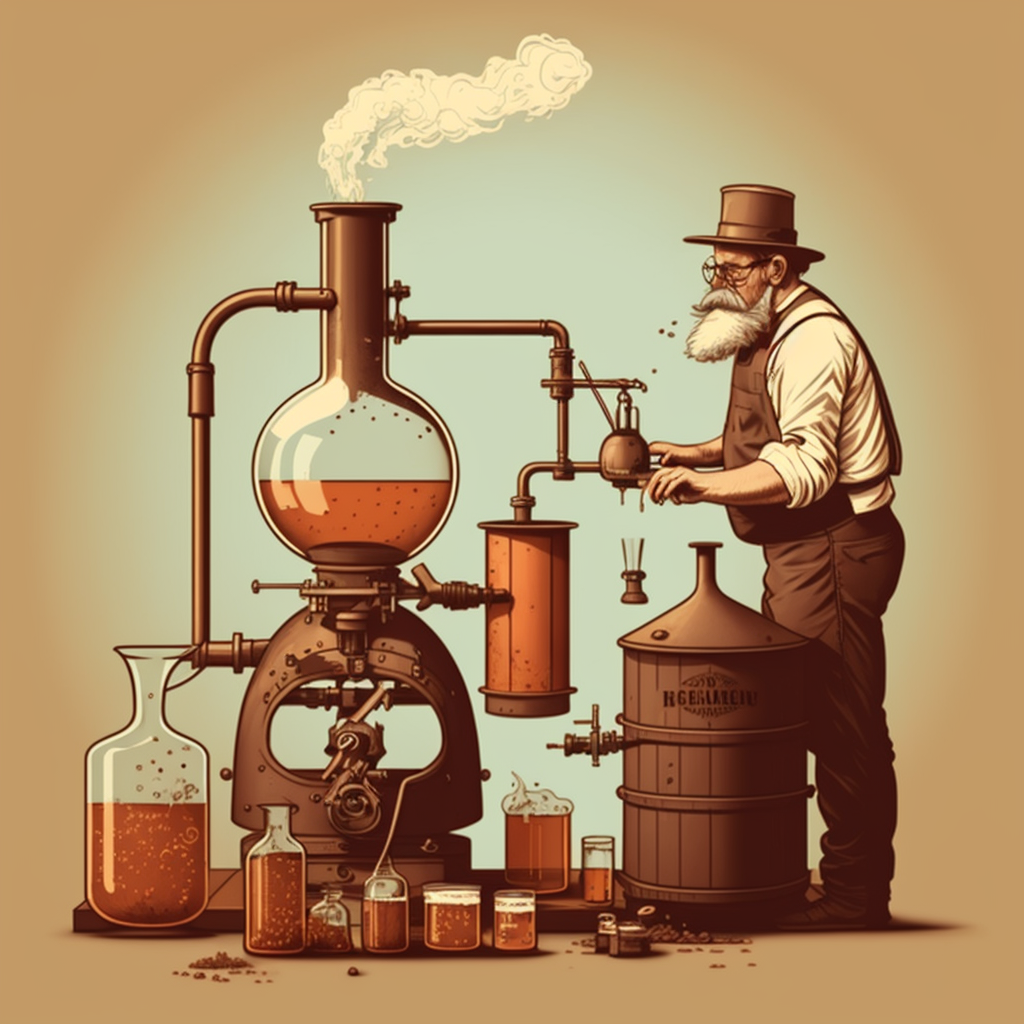If you’ve brewed a batch of craft beer at home and now wish to remove the alcohol content, there are a few methods available to achieve this. In this practical guide, we will explore how to remove alcohol from beer, specifically focusing on homebrewed craft beer.
There are two primary methods for removing alcohol from beer: vacuum distillation and freeze distillation. But how do they remove alcohol from beer using these methods?
Vacuum Distillation at home

Vacuum distillation is a process that separates the alcohol from the beer by lowering the boiling point of the mixture. This is achieved by reducing the pressure inside the distillation apparatus, allowing the alcohol to evaporate at a lower temperature, thus preserving the beer’s delicate flavors and aromas.
Equipment Needed:
- Vacuum distillation kit or DIY vacuum distillation setup
- Heat source (electric or gas)
- Accurate thermometer
- Collection vessel
Steps for vacuum distillation at home
Now that you have a basic understanding of vacuum distillation, let’s dive into how to remove alcohol from beer at home using this technique.
- Prepare the Equipment: Assemble your vacuum distillation kit according to the manufacturer’s instructions or set up your DIY vacuum distillation apparatus. Ensure all connections are secure and airtight.
- Transfer the Beer: Carefully pour your homebrewed beer into the boiling flask of the distillation setup, ensuring not to overfill.
- Apply Heat and Vacuum: Turn on the heat source, gradually raising the temperature to around 120-140°F (49-60°C). Simultaneously, apply the vacuum to reduce the pressure inside the system. Monitor the temperature closely throughout the process.
- Collect the Distillate: As the alcohol evaporates, it will travel through the condenser and collect in the receiving flask. Keep an eye on the process, ensuring the temperature remains stable and the vacuum pressure is maintained.
- Monitor Alcohol Content: Periodically check the alcohol content of the remaining beer using a hydrometer or refractometer. Continue the process until the desired alcohol level is reached.
- Turn off Heat and Vacuum: Once the target alcohol content is achieved, carefully turn off the heat source and vacuum. Allow the system to cool and return to atmospheric pressure before disassembling the apparatus.
Freeze Distillation at home

Freeze distillation, also known as fractional freezing, is a simpler method of alcohol removal that relies on the principle that water freezes at a higher temperature than alcohol. By freezing the beer and then removing the ice, the alcohol concentration can be reduced.
Equipment Needed:
- Freezer
- Large, flat container with a lid
- Strainer or cheesecloth
- Collection vessel
Steps for Freeze Distillation at Home
Now that you have a basic understanding of freeze distillation, let’s have a step-by-step look at how to remove alcohol from beer at home using this method.
- Chill the Beer: Pour your homebrewed beer into a large, flat container with a lid, and place it in the freezer. The flat container will increase the surface area, allowing the beer to freeze more evenly.
- Monitor the Freezing Process: Check on your beer periodically as it freezes. You want it to reach a slushy consistency, with ice crystals forming throughout the liquid. This process may take several hours, depending on the freezer temperature and the container’s size.
- Separate the Ice: Once the beer has reached a slushy state, remove it from the freezer. Using a strainer or cheesecloth, separate the ice from the liquid, collecting the remaining liquid in a separate vessel. The ice contains water, and removing it reduces the overall alcohol content.
- Repeat as Needed: Depending on the desired alcohol content, you may need to repeat the freezing and ice removal process multiple times. Each cycle will further reduce the alcohol concentration.
- Finalize and Carbonate: Once the desired alcohol level is reached, transfer the liquid to a fermentation vessel, and follow the usual bottling and carbonation process.
Conclusion – How to Remove Alcohol from Homebrewed Beer
Removing alcohol from homebrewed craft beer can be achieved using either vacuum distillation or freeze distillation methods. Both
techniques have their advantages and drawbacks. Vacuum distillation offers more precision and better preservation of flavors and aromas, but requires specialized equipment and close monitoring. Freeze distillation is simpler and more accessible but may result in some loss of flavor and a higher concentration of impurities. However, it is not easy to get a consistent result doing this at home, but it is possible.
Whichever method you choose, be sure to follow the steps outlined in this guide carefully and monitor the alcohol content throughout the process to ensure a successful result. With patience and practice, you’ll be able to create delicious non-alcoholic craft beer that you can enjoy guilt-free.
